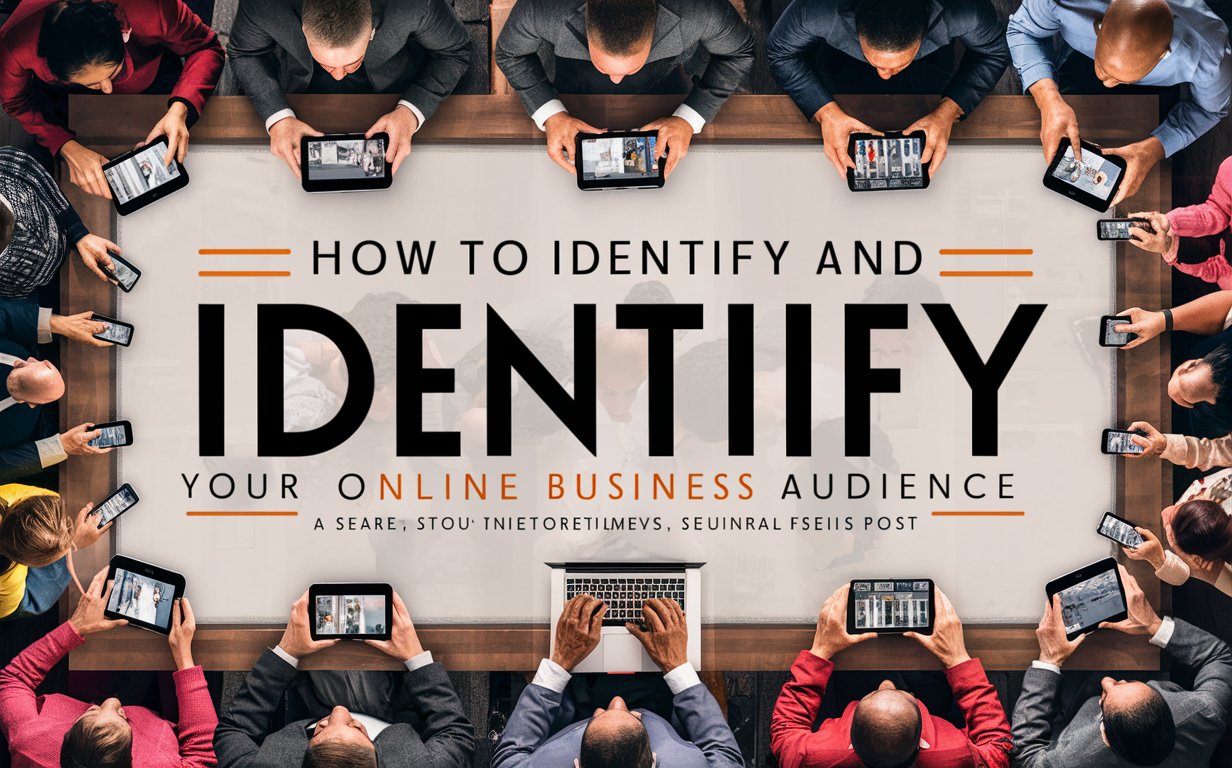
For a moment, take your business as a street performer in a crowded square. Some passersby stop, captivated by your act. Others hurry past, barely noticing. A few linger, then move on. Who are these people? What makes some stay while others leave? More importantly, how do you draw in more of the right crowd – those who not only watch but also toss coins into your hat?
This scenario mirrors the challenge every online business faces: identifying and targeting the right audience. In the vast expanse of the internet, your potential customers are out there, but they’re mixed in with billions of others. They’re scrolling, clicking, and browsing, but are they finding you? And when they do, are you speaking their language?
The art of identifying and targeting your online audience is not just about casting a wide net and hoping for the best. It’s about precision, understanding, and strategy. It’s about knowing who your ideal customers are, what they want, where they hang out online, and how to catch their attention in a sea of digital noise.
What Is Audience Identification Important?
It is crucial to understand why audience identification is so vital for online businesses. Knowing your audience:
-
Improves marketing efficiency by focusing resources on the most promising prospects
-
Enhances product development by aligning offerings with customer needs
-
Increases conversion rates by tailoring messaging to resonate with specific groups
In essence, audience identification is the foundation upon which all other marketing efforts are built. It’s the difference between shouting into the void and having a meaningful conversation with potential customers.
Utilizing Data Analytics for Audience Insights
In the digital age, data is king. Analytics tools provide a wealth of information about who’s interacting with your online presence. Here’s how to make the most of this data:
-
Utilize Google Analytics: This free tool offers insights into your website visitors’ demographics, interests, and behavior.
-
Explore social media analytics: Platforms like Facebook Insights and Twitter Analytics provide data on your social media audience.
-
Implement heat mapping tools: These show you exactly how visitors interact with your website, revealing what catches their attention.
Read More Article: The Ultimate Guide to SEO for Online Businesses
Creating Detailed Buyer Personas
With data in hand, the next step is to create detailed buyer personas. These are semi-fictional representations of your ideal customers based on market research and real data about your existing customers.
Key elements to include in your buyer personas:
-
Demographics: Age, gender, income, education level
-
Psychographics: Values, interests, lifestyle, personality traits
-
Behavioral patterns: Buying habits, brand interactions, decision-making processes
-
Pain points and challenges: What problems are they looking to solve?
Creating these personas helps humanize your data and makes it easier to tailor your marketing efforts to specific types of customers.
Conducting Market Research
While internal data is valuable, it’s also important to look outward. Conducting market research can provide broader insights into your industry and potential audience. This can include:
-
Surveys and questionnaires
-
Focus groups
-
Competitor analysis
-
Industry reports and studies
This research can help you identify trends, gaps in the market, and potential new audience segments you might not have considered.
Analyzing Search Intent
Understanding what your potential customers are searching for online is crucial. This involves analyzing search intent – the reason behind a user’s search query. There are generally four types of search intent:
-
Informational: Users looking for information
-
Navigational: Users looking for a specific website
-
Commercial: Users researching products or services before making a purchase
-
Transactional: Users ready to make a purchase
By understanding the search intent of your target audience, you can create content and optimize your website to meet their needs at each stage of their journey. In this case, local SEO services Lahore can be beneficial, helping businesses align their content with local search intents and preferences.
Utilizing Social Media for Audience Research
Social media platforms are goldmines of audience information. Here’s how to use them effectively:
-
Monitor conversations: Use social listening tools to track mentions of your brand, products, or industry.
-
Engage with your audience: Respond to comments and messages to gain direct insights.
-
Analyze your followers: Look at who follows you and engages with your content.
-
Explore hashtags: See what hashtags your potential audience is using and what they’re discussing.
Social media can provide real-time insights into your audience’s interests, pain points, and behavior, allowing you to adjust your targeting strategies on the fly.
Read More Article: How to Optimize IT Networks for Remote Work Environments?
Implementing and Refining Your Targeting Strategy
Once you’ve gathered all this information, it’s time to put it into action. This involves:
-
Segmenting your audience: Divide your audience into distinct groups based on shared characteristics.
-
Tailoring your messaging: Create content and marketing materials that speak directly to each segment.
-
Choosing the right channels: Focus on the platforms where your target audience is most active.
-
Continuous testing and refinement: Use A/B testing to optimize your approach and be prepared to adjust your strategy based on results.
Remember, audience identification and targeting is not a one-time task. It’s an ongoing process that requires constant attention and adjustment as your business grows and market conditions change.
The Bottom Line
Identifying and targeting your online business audience is a complex but rewarding process. It requires a combination of data analysis, market research, and strategic thinking. When you take the time to truly understand who your audience is and what they need, you can create more effective marketing strategies, develop better products and services, and ultimately, grow your business more efficiently.